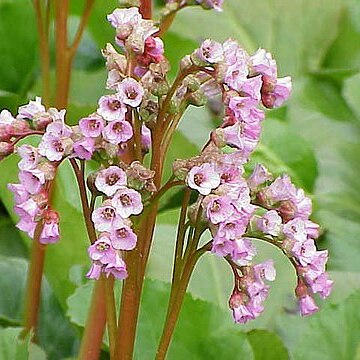A herb. It grows 30 cm high and spreads 40-60 cm wide. It has thick rootstocks. The rootstock has old dark brown sheaths around it. The leaves are oval and in rings. They have teeth along the edge. The leaves can be 20 cm long. The flowers are white or lilac. They can be tinged with pink. They occur in heads and have a smell.

